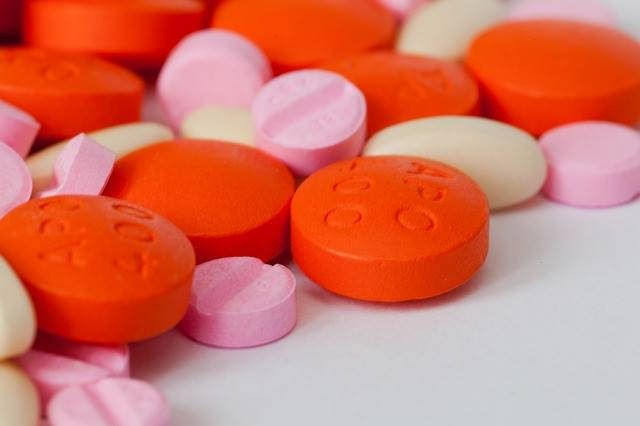The 25 Most Popular Pharmaceuticals: Do High Prices Or Off-Label Uses Turn Orphan Drugs Into Blockbusters?

What can a list of blockbuster drugs tell you about people? If you were to peek inside someone’s bathroom cabinet, the drugs found there would expose their personal and idiosyncratic health problems. If you were to open the medicine chest of the entire nation — which (arguably) is what a list of the most commonly used drugs represents — you would see the country’s most common health problems.
Yet, such a list might indicate even more about a country and its people. Since many diseases result from lifestyle choices, the top-selling drugs signify the health problems we have collectively created through daily decisions… our mass personality, so to speak.
Differences Over 20 Years
Let’s begin by looking at some broad stroke information provided by the Centers for Disease Control and Prevention (CDC). During the period of 2009 through 2012, CDC estimates 47.3 percent of Americans took at least one prescription drug in the last 30 days, while 20.6 percent took three or more and 10.1 percent took five or more. In the period of 1988 through 1994 (about 20 years earlier) the CDC estimated 39.1 percent took one drug, 11.8 percent three or more, and 4.0 percent five or more.
Generally, older people take more prescription drugs than younger, so the CDC also breaks down its estimates by age group. Within every age group as well as within all three categories of drugs (one, three or more, five or more), the CDC’s percentages have increased over the past two decades. In the 18- to 44-year-old category, for instance, 40.7 percent had at least one prescription in the earlier period compared to 46.4 percent in the most recent.
Seems fair to say prescription drug use in the population as a whole is increasing.
What drugs are people taking? Again, we turn to the CDC. In 2010, that government agency reported the three most frequently prescribed drug categories during a doctor’s office visit were analgesics (pain medicines), antihyperlipidemic agents (cholesterol medicines), and antidepressants (depression medicines). A CDC report issued the following year found the most frequently prescribed drug classes during hospital outpatient visits were analgesics (pain medicines), antidiabetic agents (diabetes medicines), and antihyperlipidemic agents (cholesterol medicines).
Pain, cholesterol, depression, and diabetes appear to be the four most treated conditions in the country. Though genetics contribute to high cholesterol and diabetes, lifestyle factors, including diet and exercise, do as well. Much of our suffering, it would appear, might be avoided by eating better and walking more.
Yet, if we move from the general to the specific, a high definition picture of blockbuster drugs tells a different story. IMS Health, a global information and technology services company, released a list of the top 100 branded drugs, based on prescription sales and prescription numbers, for the 12-month period from April 2014 through March 2015. Below are two lists of the top 25 in each category as reported in Medscape News. The first list is total sales and the second a number of prescriptions:
Total Sales: Drug Name (what it treats)
- Humira (arthritis)
- Abilify (psychosis, depression)
- Sovaldi (Hepatitis C)
- Crestor (cholesterol)
- Enbrel (arthritis)
- Harvoni (Hepatitis C)
- Nexium (acid reflux)
- Advair Diskus (asthma)
- Lantus Solostar (diabetes)
- Remicade (arthritis)
- Copaxone (multiple sclerosis)
- Neulasta (cancer, anemia)
- Januvia (diabetes)
- Lantus (diabetes)
- Rituxan (cancer)
- Spiriva Handihaler (bronchitis)
- Lyrica (fibromyalgia)
- Tecfidera (multiple sclerosis)
- Atripla (HIV)
- Avastin (cancer, leukemia)
- Truvada (HIV)
- Gleevec (leukemia)
- Epogen (anemia)
- Oxycontin (severe pain)
- Symbicort (asthma)
Number of Prescriptions: Drug Name (what it treats)
- Synthroid (thyroid)
- Crestor (cholesterol)
- Ventolin HFA (bronchial conditions)
- Nexium (acid reflux)
- Advair Diskus (asthma)
- Lantus Solostar (diabetes)
- Vyvanse (ADHD)
- Lyrica (fibromyalgia)
- Spiriva Handihaler (bronchitis)
- Januvia (diabetes)
- Lantus (diabetes)
- Abilify (psychosis, depression)
- Symbicort (asthma)
- Tamiflu (influenza)
- Cialis (erectile dysrunction)
- Viagra (erectile dysrunction)
- Suboxone (opiate addiction)
- Zetia (cholesterol)
- Xarelto (clots and stroke)
- Bystolic (high blood pressure)
- Celebrex (pain, inflammation)
- Nasonex (nasal allergies)
- Namenda (dementia)
- Flovent HFA (asthma)
- Oxycontin (severe pain)
Based on information supplied by the CDC, these lists include quite a few usual suspects. If pain, cholesterol, diabetes, and depression are what ails us, then many of these medicines directly treat our pain. The surprises include some so-called “orphan drugs.” This category, created by the Food and Drug Administration, includes medicines treating diseases that affect fewer than 200,000 people in the United States. (Hepatitis C, multiple sclerosis, certain cancers, and HIV are rare diseases.) The Orphan Drug Act provides subsidies, tax credits, and special marketing rights to encourage companies to make these drugs, which would be prohibitively expensive otherwise.
If very few patients need orphan drugs, then how does an orphan turn into a blockbuster? Only two paths exist, suggests a 2012 Harvard study: high per-unit prices and off-label uses. Sovaldi, the Hepatitis C drug, made headlines when its maker announced its price tag: total treatment costs about $84,000 per patient, minus supplementary treatments (as reported in the Wall Street Journal).
Meanwhile, other drugs on the list above became popular due to off-label uses. Off-label use means a doctor can legally prescribe FDA-approved drugs for a purpose that it is not indicated for (except in the case of opioids and some other controlled substance drugs). Synthroid, for example, sitting in the number one position on the list may be indicated for thyroids but it is prescribed for patients with depression.
In the end, the best-selling list reveals the expected — that we often turn to doctors for help with our pain, our depression, our diabetes, and our cholesterol levels — and a little bit of the unexpected — that some of the rarest diseases contribute substantial profits to the pharmaceutical industry.
Published by Medicaldaily.com



























